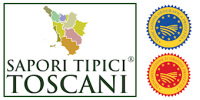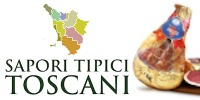Our network:
Saturday 21 December 2024
Siena in the Middle Ages
Siena reached the height of its splendour in the Middle Ages, when in 1147 it became an independent comune after a century of rule under the bishop. After gaining its independence, the city adopted an expansionistic policy, considerably increasing its domains. But the development and riches brought by trade also accompanied social conflict, which soon developed into a bloody struggle for supremacy between Guelphs and Ghibellines, the two opposing factions that supported respectively the Church and the Empire. Due to its Ghibelline status, Siena went to war against neighbouring Florence, which supported the Pope. Its troops gained a formidable victory against the Florentines at the Battle of Monteperti, on September 4th 1260. Only nine years later, however, Siena was in turn defeated by Florence and the city passed into Guelph hands, heralding a new government and a long period of prosperity.
Siena reached its golden age of architecture during the 14th century, when the city was able to erect many of the most important buildings that survive to this day. These include the Campo, the Palazzo Pubblico (then known as Palazzo dei Signori in reference to the city’s ‘Nine’ governors) the Duomo and the Torre del Mangia. This was also the period in which Senese art flourished, with masterpieces such as Duccio’s Maestà. At this time the city invested enormously in costly projects such as the building of the fortified village of Paganico or the port at Talamone.
But Siena was also known for its lavish feasts and tournaments, such as the Gioco dell’Elmora, in which young men fought one another with clubs and stones. This game was supplanted in 1291 with the Gioco delle Pugna, in which the contenders fought with their hands covered by a wicker structure, or other games such as the Pallonata or the Bufalata. Piazza del Campo was frequently used for a variety of horse races, which developed over the centuries into the city’s best known event, the Palio.
In emulation of ancient Rome, Siena wished to underline its independence. But the great Plague of 1348 decimated the city’s population, bringing decadence and financial collapse. In the fifty years that followed, the city underwent considerable political upheaval, famine and rebellion, which culminated in the end of the government of the ‘Nine’ and loss of independence when in 1390 the city was annexed to the Grand Duchy of Tuscany.
Despite losing their independence, the people of Siena retained their proverbial courage and cunning. St Catherine of Siena, who during her lifetime was called Caterina Benincasa, died in 1380 after playing an instrumental role in bringing back the Papacy to Rome from its exile in Avignon, thereby proving that the city had not altogether lost its political influence.
Siena reached its golden age of architecture during the 14th century, when the city was able to erect many of the most important buildings that survive to this day. These include the Campo, the Palazzo Pubblico (then known as Palazzo dei Signori in reference to the city’s ‘Nine’ governors) the Duomo and the Torre del Mangia. This was also the period in which Senese art flourished, with masterpieces such as Duccio’s Maestà. At this time the city invested enormously in costly projects such as the building of the fortified village of Paganico or the port at Talamone.
But Siena was also known for its lavish feasts and tournaments, such as the Gioco dell’Elmora, in which young men fought one another with clubs and stones. This game was supplanted in 1291 with the Gioco delle Pugna, in which the contenders fought with their hands covered by a wicker structure, or other games such as the Pallonata or the Bufalata. Piazza del Campo was frequently used for a variety of horse races, which developed over the centuries into the city’s best known event, the Palio.
In emulation of ancient Rome, Siena wished to underline its independence. But the great Plague of 1348 decimated the city’s population, bringing decadence and financial collapse. In the fifty years that followed, the city underwent considerable political upheaval, famine and rebellion, which culminated in the end of the government of the ‘Nine’ and loss of independence when in 1390 the city was annexed to the Grand Duchy of Tuscany.
Despite losing their independence, the people of Siena retained their proverbial courage and cunning. St Catherine of Siena, who during her lifetime was called Caterina Benincasa, died in 1380 after playing an instrumental role in bringing back the Papacy to Rome from its exile in Avignon, thereby proving that the city had not altogether lost its political influence.
Booking.com
• Siena in the Renaissance
• Siena in the Middle Ages
• Siena in Antiquity
• Town Map Siena
• Farm Holidays and Country Houses
• Residence, Apartments
• Bed & Breakfasts
• Historical Residences
• Last Minute Siena
• Restaurants
• Pubs & Wine Bar
• University for Foreigners
• Palazzo Chigi-Saracini
• Palazzo d’Elci degli Alessi
• Loggia della Mercanzia
• Palazzo Sansedoni
• Palazzo Chigi-Zondadari
• Fonte Gaia fountain
• Carthusian Monastery of Pontignano
• Forte di Santa Barbara
• The Duomo – The Cathedral of the Assunta
• Church of the Osservanza
• The Oratory of San Bernardino
• Church of San Francesco
• Short Biography of St Catherine of Siena
• St Catherine Sanctuary
• Church of S. Niccolò al Carmine
• Bologna-Buonsignori museum
• Accademia dei Fisiocritici
• I Musei Senesi
• The Palazzo Pubblico and the Torre del Mangia
• Piazza del Campo
• The Montagnola Senese and the Fortified Village of Sovicille
• The Castles of Belcaro and Quattro Torri
General information
• Town map • Siena in the Renaissance
• Siena in the Middle Ages
• Siena in Antiquity
Transport in town
• Map of Hotels in Siena • Town Map Siena
Transport out of town
• Train services
Where to Stay
• Hotels • Farm Holidays and Country Houses
• Residence, Apartments
• Bed & Breakfasts
• Historical Residences
OFFERS & LAST MINUTE
• Reservation Services Siena • Last Minute Siena
Where to eat and drink
• Disco Dancing • Restaurants
• Pubs & Wine Bar
Education
• Siena University • University for Foreigners
Art and monuments
• Palazzo Piccolomini and Palazzo delle Papesse • Palazzo Chigi-Saracini
• Palazzo d’Elci degli Alessi
• Loggia della Mercanzia
• Palazzo Sansedoni
• Palazzo Chigi-Zondadari
• Fonte Gaia fountain
• Carthusian Monastery of Pontignano
• Forte di Santa Barbara
Art and religion
• Church of Sant’Agostino • The Duomo – The Cathedral of the Assunta
• Church of the Osservanza
• The Oratory of San Bernardino
• Church of San Francesco
• Short Biography of St Catherine of Siena
• St Catherine Sanctuary
• Church of S. Niccolò al Carmine
Museums and galleries
• The Museo Civico • Bologna-Buonsignori museum
• Accademia dei Fisiocritici
• I Musei Senesi
Art and tourist attractions
• Cappella di Piazza • The Palazzo Pubblico and the Torre del Mangia
• Piazza del Campo
• The Montagnola Senese and the Fortified Village of Sovicille
• The Castles of Belcaro and Quattro Torri
Booking.com
• The July and August Palio
• The Contrade
• The Days of the Palio
• The Drappellone
• The Eve of the Palio
• The Corteo Storico Procession
• The Race
• The Patron Saint and Oratory of Each Contrada
• Weekly Appointments in each Contrada from April onwards
• Croce del Travaglio Place
• From Piazza del Campo to the Duomo Along Via di Città
• The Curves of Piazza del Campo
• Costarella dei Barbieri street
• Borgo d’Ovile
• The Terzo of Camollia – main streets
• Casato di Sopra e Casato di Sotto
• Terzo di San Martino district
• The Terzo di Città District - Via Stalloreggi, Via San Quirico
• The Terzo di Città District – The Pinacoteca Nazionale
• Golf courses in Siena and Tuscany
• Wedding in Tuscany - Siena area
• San Casciano dei Bagni
• Chianciano Terme
• Bagni San Filippo
• Bagno Vignoni
• Rapolano Terme - Baths of San Giovanni and Baths of the Antica Querciolaia
• The Countryside around Siena and its Thermal Water Springs
• SkiPass Monte Amiata
• WebCam sul Monte Amiata
• Meteo Monte Amiata
• The Val d’Orcia and Its Main Towns
• Pienza - the old town centre
• Montepulciano - the old town centre
• San Quirico d’Orcia - the old town centre
• Montalcino and the Land of Brunello
• The Abbey of Monte Oliveto Maggiore and the Crete
• The Crete Senesi
• Castellina in Chianti and the Via Chiantigiana Towards Siena
• Siena and Southern Chianti - from the Castle of Montalto to the Castle of Brolio and on to the Castle of Meleto
• The Chianti Hills - Monte Calvo, Monte Luco and Monte San Michele
• Cortona and the Valdichiana
• San Gimignano - The old town centre and its major sights
• The Val d’Elsa - Monteriggioni and Colle di Val d’Elsa
• Along the Old Via Francigena
• Oleum Evo online selling
• Sapori Tipici Italiani buy online now
• il Prosciutto Cotto
The Palio of Siena
• The Origins • The July and August Palio
• The Contrade
• The Days of the Palio
• The Drappellone
• The Eve of the Palio
• The Corteo Storico Procession
• The Race
• The Patron Saint and Oratory of Each Contrada
• Weekly Appointments in each Contrada from April onwards
Sightseeing
• Via di Città (formerly Via Galgaria), Siena’s Most Elegant Street • Croce del Travaglio Place
• From Piazza del Campo to the Duomo Along Via di Città
• The Curves of Piazza del Campo
• Costarella dei Barbieri street
• Borgo d’Ovile
• The Terzo of Camollia – main streets
• Casato di Sopra e Casato di Sotto
• Terzo di San Martino district
• The Terzo di Città District - Via Stalloreggi, Via San Quirico
• The Terzo di Città District – The Pinacoteca Nazionale
What to see & do
• Wedding in Siena • Golf courses in Siena and Tuscany
• Wedding in Tuscany - Siena area
• San Casciano dei Bagni
• Chianciano Terme
• Bagni San Filippo
• Bagno Vignoni
• Rapolano Terme - Baths of San Giovanni and Baths of the Antica Querciolaia
• The Countryside around Siena and its Thermal Water Springs
Monte Amiata
• Monte Amiata - nature tourism the year round • SkiPass Monte Amiata
• WebCam sul Monte Amiata
• Meteo Monte Amiata
Specials - Out of town
• Gift Ideas for traveling • The Val d’Orcia and Its Main Towns
• Pienza - the old town centre
• Montepulciano - the old town centre
• San Quirico d’Orcia - the old town centre
• Montalcino and the Land of Brunello
• The Abbey of Monte Oliveto Maggiore and the Crete
• The Crete Senesi
• Castellina in Chianti and the Via Chiantigiana Towards Siena
• Siena and Southern Chianti - from the Castle of Montalto to the Castle of Brolio and on to the Castle of Meleto
• The Chianti Hills - Monte Calvo, Monte Luco and Monte San Michele
• Cortona and the Valdichiana
• San Gimignano - The old town centre and its major sights
• The Val d’Elsa - Monteriggioni and Colle di Val d’Elsa
• Along the Old Via Francigena
Typical products
• Typical Tuscan flavours • Oleum Evo online selling
• Sapori Tipici Italiani buy online now
• il Prosciutto Cotto









